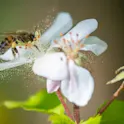
Featured news
05 Jun 2023
Seeing inside a dying brain: Here are five Frontiers articles you won’t want to miss
By Deborah Pirchner, Frontiers science writer Image: Shutterstock.com At Frontiers, we bring some of the world’s best research to a global audience. But with tens of thousands of articles published each year, it’s impossible to cover all of them. Here are just five amazing papers you may have missed. What happens to the brain when we die? The mystery of what happens in the brain when we die has fascinated humans for centuries. Despite understanding gained from recent studies, there still are open questions – not lastly because obtaining data about the last moments of life is difficult. Researchers largely have to rely on descriptions of near-death-experience survivors. To fill knowledge gaps, these accounts are immensely valuable. Now, in a review article published in Frontiers in Aging Neuroscience, an international team of researchers has reviewed the current knowledge on what neurophysiological changes occur in the brain during these experiences. They also examined what anatomical correlates to these changes are, and how drugs and metabolic factors are involved. Understanding the underlying neurophysiological changes in the dying human brain could be the only way to decipher the neurophysiology of death, the scientists noted. Descriptions from near-death survivors may be our only […]

